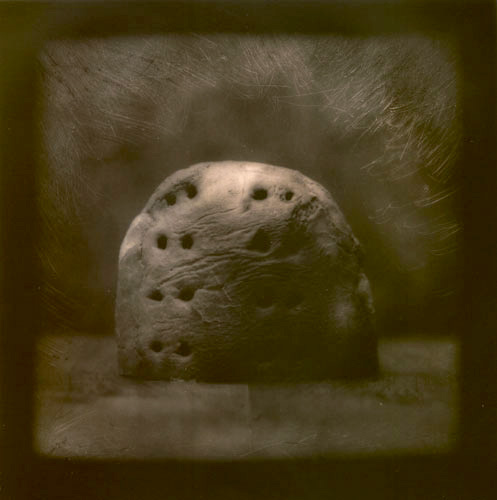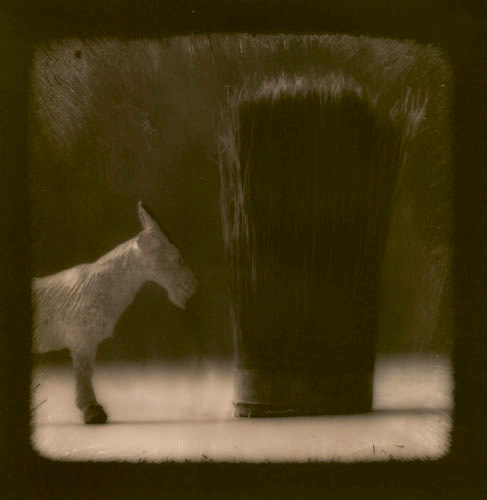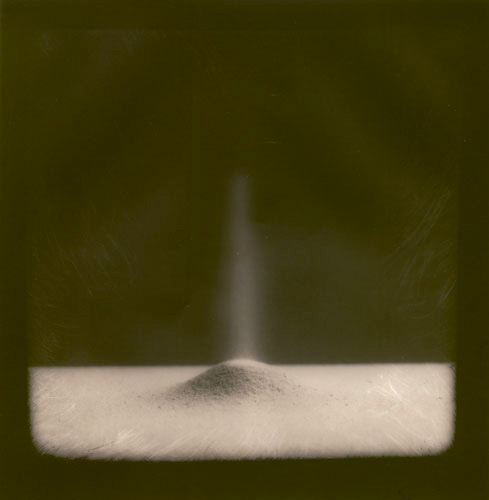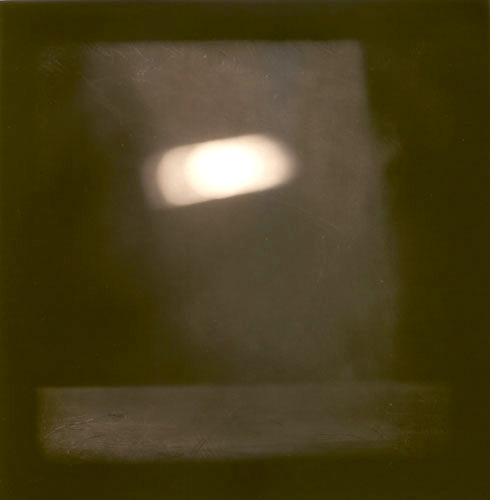




PHOTOGRAPHIC STORIES BY PAWEŁ ŻAK The convention of photography confronts any photographer with the given world, with what one can find in the real world and what the camera may register in its fragmentary vision of time and space. The photographer merely decides when, where and how to do it, which seriously limits the author in the possibilities of creation based on some direct way of shaping the image. In a certain sense, the image had always been there - the task of the photographer is only to spot and register it, which does not seem much. But the history of photography proves that one can perform enormous tasks in this seemingly narrow field. For many an author the aforementioned convention becomes a heavy restraint, provoking photographers to transgress it. The bigger part of the history of photography as an artistic tool is composed of such repeatedly undertaken attempts at transgression, attempts of going beyond the purely documentary relation between the image and its object. Transgressing this basic feature of photography was and always has been a fascinating challenge for a large number of artists. Paweł Żak belongs to this group of photographers for whom - even considering the respect they have for the medium and their awarenes of its limits - a purely documentary relation is not enough. Żak creates his "world for registration" himself, subordinating its image to certain manual manipulations because of the need to manifest his own creativity, but also because of the need of privacy. However, I do not think that it is the result of the disappointment with what the everyday reality offers in terms of its physical existence. It is rather the result of the need to have more direct, more intimate contact between what he photographs and the image itself. The world seen according to the pure photographic convention is always the external world, the outside, and that in itself would seriously limit this specific kind of expression and intimacy which Paweł Żak seems to be looking for. The images that come into being in such a way and due to such motivation - not counting autobiographical motifs - have diverse and direct connections with the persona of the author who does not always have to appear in the picture. In Żak's photographs one strongly feels the manifestation of a discrete and continually perceptible presence of the author although it is quite difficult to describe. It is here that photography reveals its double ability to render presence - the presence of those whose volatile traces of being it registers and the presence of the one who takes the photograph. Often we are not conscious of this second "presence" because we succumb to the charm of photographs whose message is rooted precisely in this quality of theirs. Żak additionally intensifies it through various manual manipulations which not only aestheticize the image and make it less literal, but which also contain the personal trace of the author's gesture. The ability of photography to exert strong psychological and emotional influence is based, among other things, on this double presence of a person in the picture which we are more or less conscious of. Beginning with the first series called "House and Garden", created between 1993 and 1994, reality seems to Żak to be a world full of ethereal traces of human presence both in the metaphorical as well as the most literal, material sense. This series is composed of pictures of the author's family house and garden along with the fragmentary traces of human existence and activity. The last two photographs contain a barely visible image of phantom-like figures, the author's parents, the dwellers of the house and garden. One could notice in this series a certain persistent feature of Paweł Żak's art - namely its literary-like narration. The use of a whole set of pictures strengthens the narrative character of the pictures. In his later works, also put together into groups, the narrative is accompanied by theatricality, as Żak's pictures present a specific kind of a performance wherein, as in the theatre, the light plays an extremely important part besides the stage direction. The narration carried on in such a way, employing various formal means, becomes poetically ambiguous and removed far from photography conceived as an unequivocal document. The manifold and diverse series called "Stories", started in 1996, is composed of single photographs and mini-series which - like chapters in a novel - contain their own episodes. The content of the pictures, though not always legible and obvious, is equally important for the author as the plastic shape of these "pictures to read" which draw our attention due to their refined artistic charm. Certain objects repeat themselves, appearing in various sets and settings. A mysterious little creature, a pear, some sand, toys or a cardboard decoration enable the author to tell different stories. Besides certain funny situations, like the adventures of this little creature in the country of equally small objects, we are presented with sets of objects which suggest "serious" and universal contents, like, for example, a little stream of pouring sand and the scales. An identical message may be conceived when the author puts toys together, toys which are frequent heroes of "Stories". A Barbie doll, a figure of a little tiger and model cars become entangled in situations far removed from the carefree world of childhood. The message of these photographs has to do with the affairs of adults, like the feeling of the passing of things and time and the reflection upon the complexity of our relations with the multitude of worlds in which our existence is involved. The confrontation of those two worlds - the adult world and the world of childhood - strengthens the gentle expression of those pictures and helps to create the ambiguity of their contents. The operations the author performs sometimes make us uncertain as to the identity of what we are seeing. For example, is the object lying in the sand a halved pear, flying off, bound to a soap bubble with a thread, or is it something completely different? Żak's works often cause similar doubts, but in the context of the intriguing and thought-stimulating uncertainty which accompanies the perception of these images it is not really necessary and not always possible to do away with such questions. Żak's latest mini-series, which is being created within the fram of ever expanding "Stories", is based mainly on a complicated system of images placed within other images. Chamber stagings are supplemented here by projections of photographs onto various half-transparent surfaces. This method offers the author new possibilities of evoking contents based on whole systems of objects and images that permeate one another. The "Stories" series form a world image, created for photography, and, simultaneously, a specific record of a trace of presence, this time not of other people, but of the author himself. The images of objects incorporated into "still-lives" or interplaying in stagings give evidence to it in a double way. First, they prove the presence of someone who imagined the whole situation, staged and photographed it, and second, of someone who completed the photo by means of certain manual operations. An untitled series of Żak's pictures from 1998, showing blades of grass, is devoted purely to problems of plastic arts. The means used in this case are very simple. The author uses the scale of an object, close-ups and subtle lighting, adding a manually treated background. That is how he brings those common objects into the foreground, transforming their images into visually attractive and beautiful works. Images created by means of such methods belong undoubtedly to staged photography which remains specific and original because it concentrates on common objects that became poetically transformed. The operations which aestheticize the image are simple and photographic - they are the masterful and at the same time subtle use of light, close-ups, the precise composition of frames, sepia colouring and the process of whitening of prints. On the other hand, the manual operations of the author, like local whitening of only parts of photos, the cuts and scratches of the negative, stress only the suggestions of the contents, introducing the trace of the author's gesture. They are essential not only for a more masterful plastic effect, but they also manifest the freedom of creation on the part of the photographer who usually is only a passive observer of the reality given. In spite of those manual and extra-photographic manipulations Żak's works preserve all the basic qualities of photography. The final effect is based mainly on specific photographic features, like the frame, close-up and light. Żak is a master of the use of light and the softness of images which, along with the colour of sepia, unify his visions, making them unreal. In this way the artist creates a kind of a veil, separating the image of the world from the perceiver, a kind of a subtly drawn borderline between the real world and the images created. In those photographs, as on the stage, the light reveals the protagonists of the performance surrounded by darkness. Sepia does not function here as a means of archaization of the pictures - it only strengthens the theatrical effect of isolation from reality. The rectangle of the picture's surface is not a mirror any more, or a window with a view to the world, as the case would be in "ordinary" photography, but it marks the edge of an illusory space of a theatrical stage on which poetically unsaid events take place. The art of the author of "Stories" is characterized by its private, sometimes even intimate aura. It is the result not only of the forms used or of the physical relations between small objects and the author who photographs them from close up. The objects playing on the miniature stage are not accidental. They are connected with the author on the personal level. They belong to him or to the people closest to him, they form a part of his private history. And although we do not know its details, the spectacle draws our attention and moves the imagination. Paweł Żak's approach and his activity resulting from it may be compared to the approach of a painter or a poet who struggles with the commonplace and the prosaic in life. Although the artist generally uses ready-made, real objects, when he performs his operations on images, and sometimes also on objects, he creates ambiguous images which strongly impress themselves on the imagination of the perceiver. The intimate privacy, often referred to here, is revealed in Paweł Żak's works also in a different way. Photography - which is a paradox, because it opposes the mechanical nature of its images - may tell us quite a lot about the author of the photographs in spite of the fact that he is not in them, hidden behind his camera. As in no other picture we can, in the case of photography, see the world through the eyes of its author. What we see there has been seen in exactly the same way by the author at the moment of the registration of the image. We, the perceivers of the photographs, come into contact with the author, with his individual and personal manner of seeing, and this contact is incomparably deeper and more direct in photography than in the case of strictly manual works, like paintings, drawings or graphic works. As far as the latter are concerned, we can at the most come into closer contact with the artist's imagination or with the trace of his hand within the work. In photography, on the other hand, we come close to his personal way of seeing something that took place in some concrete "there and then" of the author, something that is transformed into the "here and now" of the perceiver every time he performs the act of viewing the work. The complicated relation between time past and present, the overlapping and mixing of those two aspects of time is also one of the most characteristic features of Paweł Żak's art. Stagings, masterful form or manipulations of the images are not merely operations of the aestheticizing kind. They also strip the photographic image of its literal qualities and make it seem unreal. Thanks to them the tensions which are born in the contact with the world, on the border of the internal and the external, can be rendered in a poetic way. The perceiver who contacts these images is able to broaden his experience and to enter the internal world of the author as seen through his eyes. The phrase "the world seen through the eyes of the author" in the case of Żak's photographs acquires a very specific meaning. Looking at them we are able to see through his eyes the image of reality which he himself created. It seems to be equally real and physical because it has been registered on a photographic print, but it is also poetic and imaginary. This entrance or passage into an, after all, very intimate sphere of experiencing the world, stands behind the intriguing power of the works by Paweł Żak. However, it depends on each perceiver's sensibility and imagination how broad and interesting this world might seem to him.
Lech Lechowicz, July 2000
translated by Maciej Świerkocki




Copyright - ©2000 Paweł Żak, Lech Lechowicz, Galeria FF ŁDK